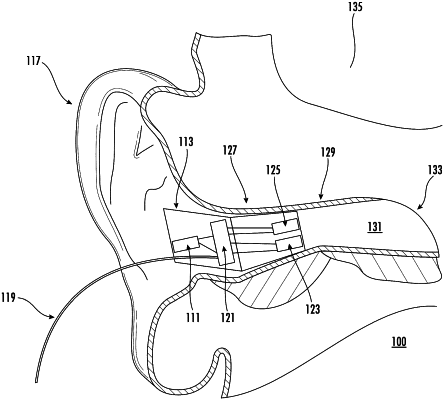| CPC H04R 25/505 (2013.01) [H04R 2225/43 (2013.01)] | 11 Claims |

|
1. A device comprising:
a user interface that generates an input signal in response to a user input;
a memory that stores instructions; and
a circuit, wherein the circuit executes the instructions to perform operations, the operations comprising:
sending a test signal to a speaker of an earphone in response to the input signal, wherein the earphone includes an ambient microphone, an ear canal microphone, the speaker, and a sound isolating component, and wherein the sound isolating component is configured to form a level of acoustic isolation between a first side of the earphone and a second side of the earphone when the earphone is worn by a user, wherein the test signal has at least one frequency component less than or equal to 60 Hz, wherein the frequency component is also greater than or equal to 30 Hz, and wherein the test signal has a predetermined time length;
receiving an ear canal microphone signal during the emission of the test signal by the speaker;
calculating a seal integrity value by comparing the test signal sent to the speaker to the ear canal microphone signal, wherein the seal integrity value is calculated by using at least one of an average cross-correlation magnitude or an average cross-correlation magnitude divided by a scalar value;
sending a message to the user of a bad seal if the seal integrity value is below a threshold value or sending a message to the user of a good seal if the seal integrity value is equal to or greater than the threshold value;
receiving an ambient microphone signal;
generating a frequency dependent ambient sound pressure level curve from the ambient microphone signal for a frequency range;
comparing the pressure level curve to a reference level curve within the frequency range and if the pressure level curve is less than the reference level curve anywhere within the frequency range then a message is sent to the user that calculation of an DRCF can proceed;
selecting an audio content to use for a DRCF test; and
sending the audio content to the speaker.
|